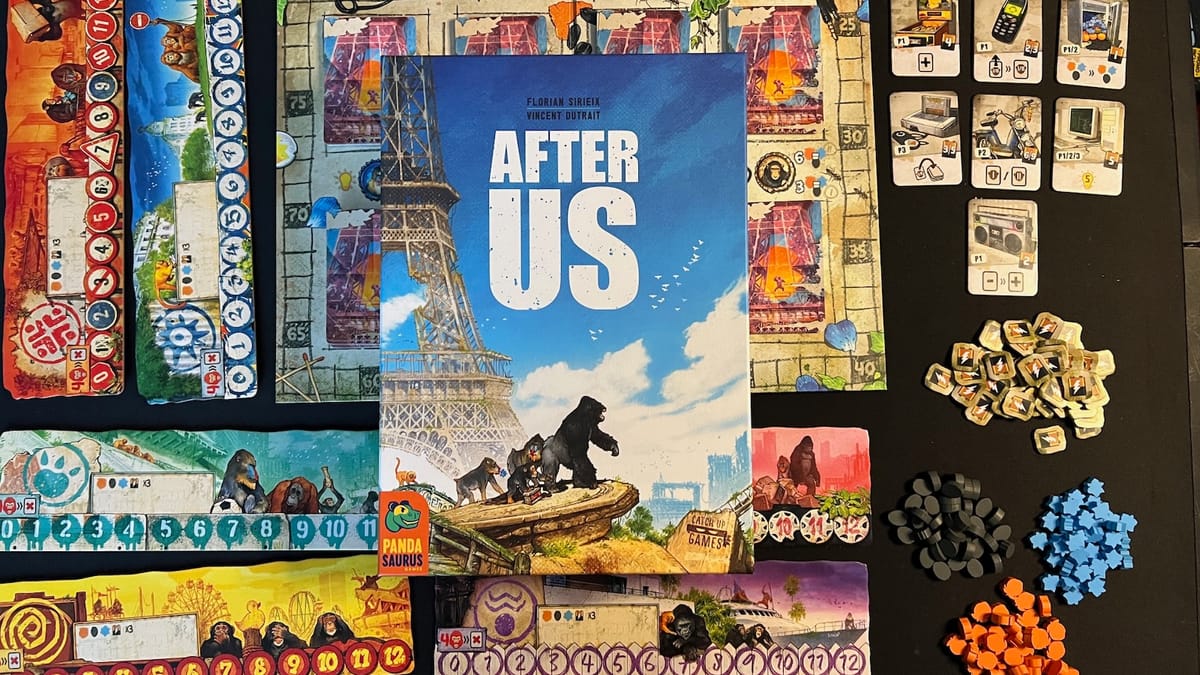
Post-apocalyptic ape pop culture has been around for awhile, namely in the Planet of the Apes franchise. I have fond memories of watching the original movies with my father when I was younger and asking why the lips weren’t moving and the newest iteration of the franchise has been a pleasant surprise. I was a bit sad when my experience playing After Us felt more like watching the Marky Mark attempt at the films than the other two series.
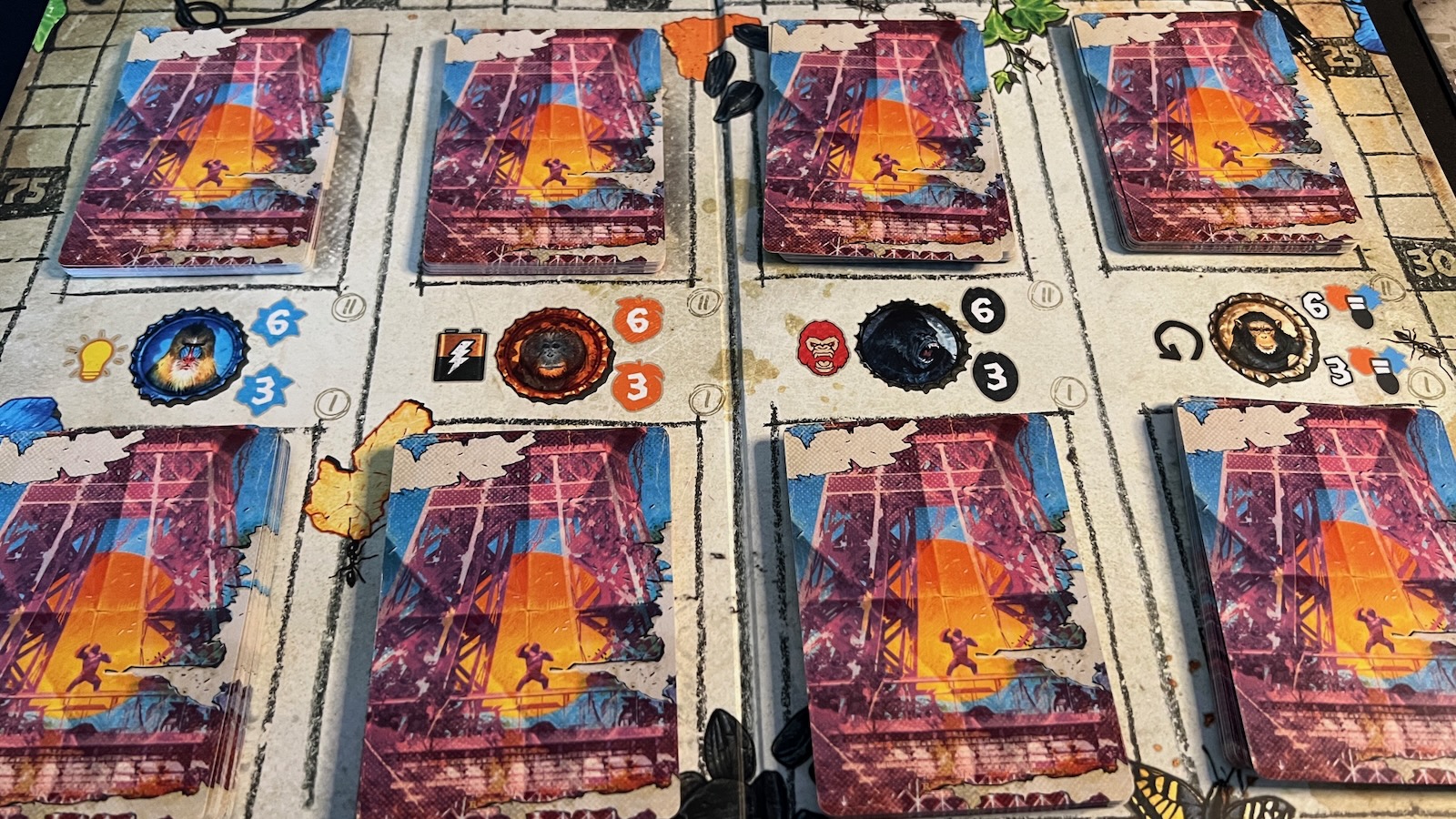
After Us is a new take on a deck building game from designer Florian Siriex and publisher Pandasaurus for 1-6 players. In the game, players control a faction of apes who are thriving after the fall of human civilization. These factions are racing to 80 points as they collect resources, draft new ape helpers into their deck, and utilize antiquated technology from the lost human era. Players start the game with a personalized game board and a starter deck of tamarin monkeys. Turns are taken simultaneously over a series of three phases.
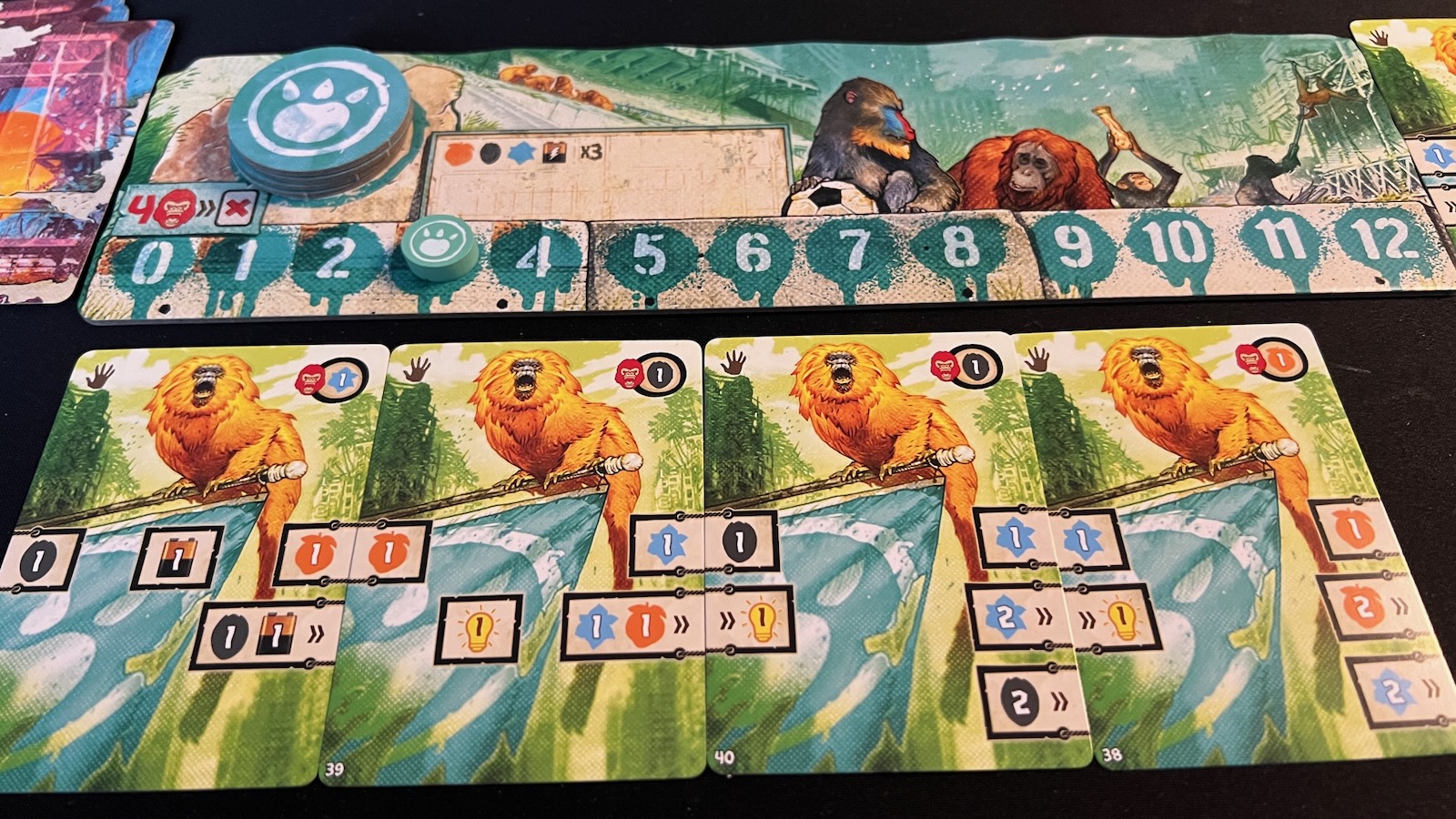
In phase one, all players draw four cards from their deck and arrange the cards in any way they’d like in front of them. On the cards are three rows of broken and completed boxes. Players will try to complete boxes by arranging cards in a specific order. Players will then evaluate the completed boxes on the cards starting from left to right, top to bottom. Row one is usually about gaining one of the three basic resources (seeds, flowers, and oranges) and energy tokens, row two is usually about spending resources to gain victory points, and the third row is about spending resources to activate an ape card’s specialty.
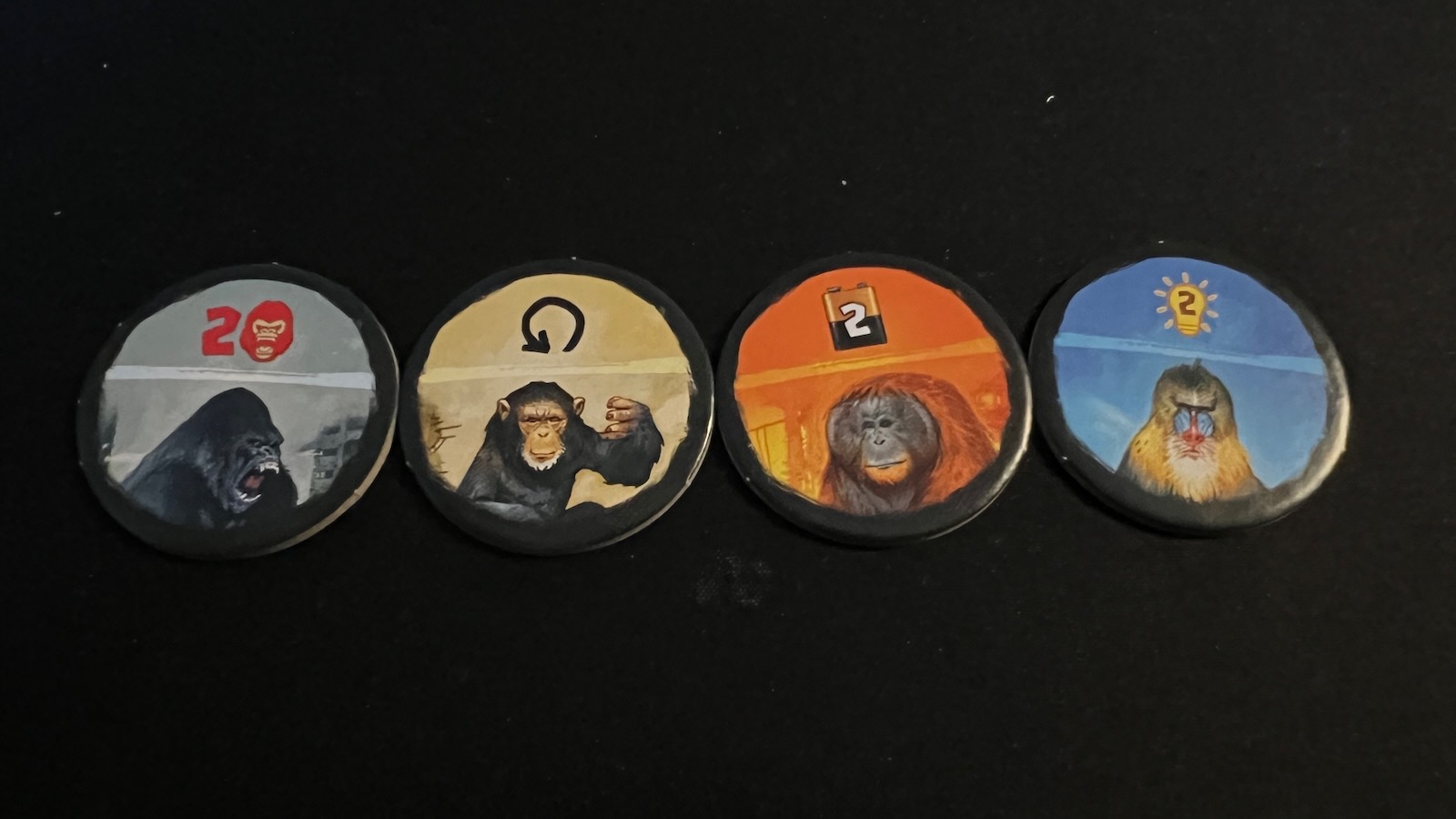
In phase two, players will take one of four disks representing one of the four specialty apes on the main board. Players will flip their discs simultaneously and then activate the bonus at the top of the disc for free. Players are then able to buy one ape card matching the disc by discarding three resources for a level I card and six resources for a level II card. These cards are then placed on the top of the draw deck. The apes each have different special abilities:
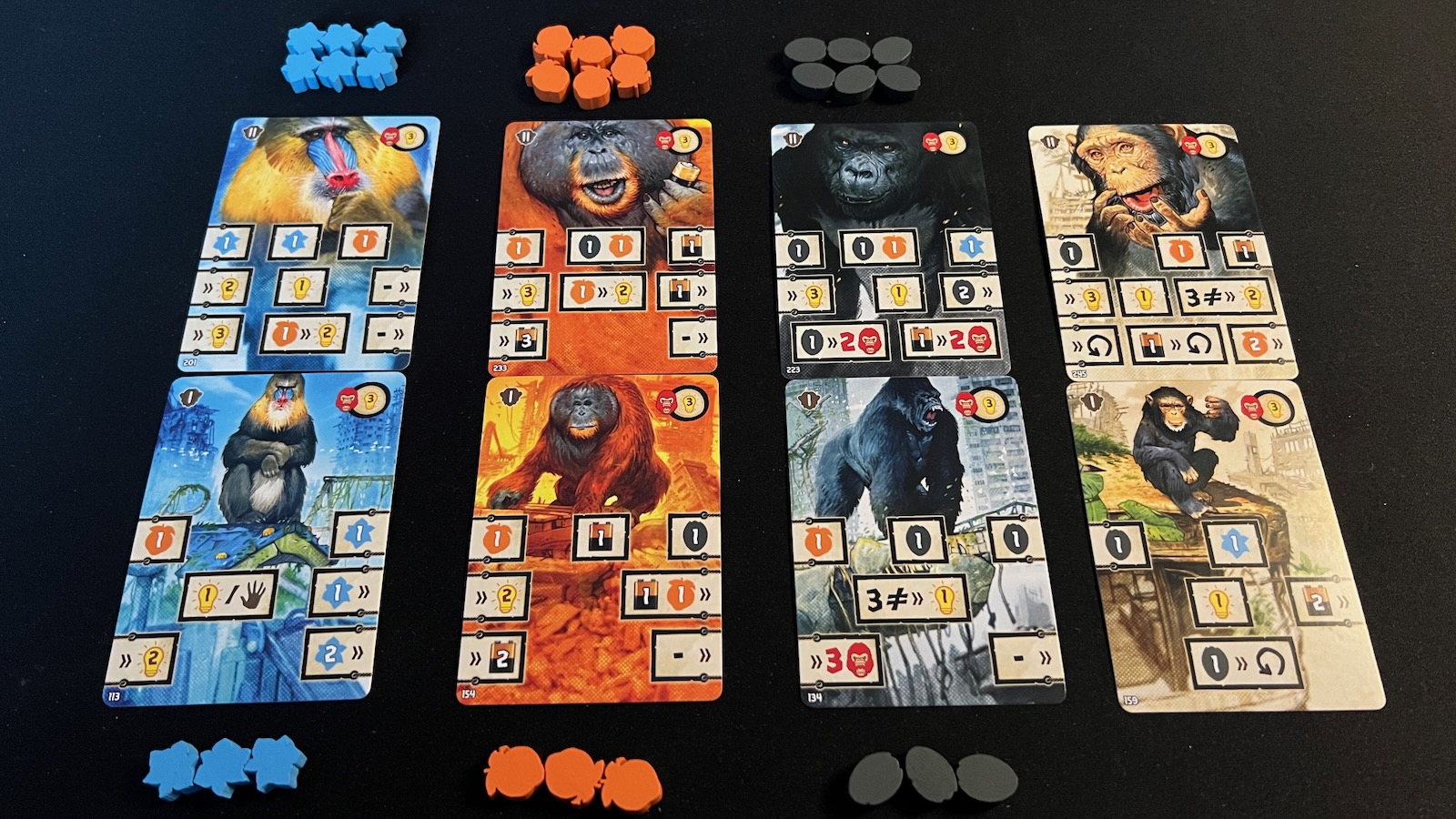
- Orangutans give players more energy tokens to activate the human artifacts.
- Gorillas produce rage which is tracked on the player boards. At any time, players can spend four rage to dismiss a card from their active pool and gain a bonus.
- Chimpanzees allow players to reactivate a completed frame in their tableau.
- Mandrills give more victory point opportunities than any other cards.
During this phase, players can also spend two identical resources to activate the bonus on the tile of a player to their left or right.
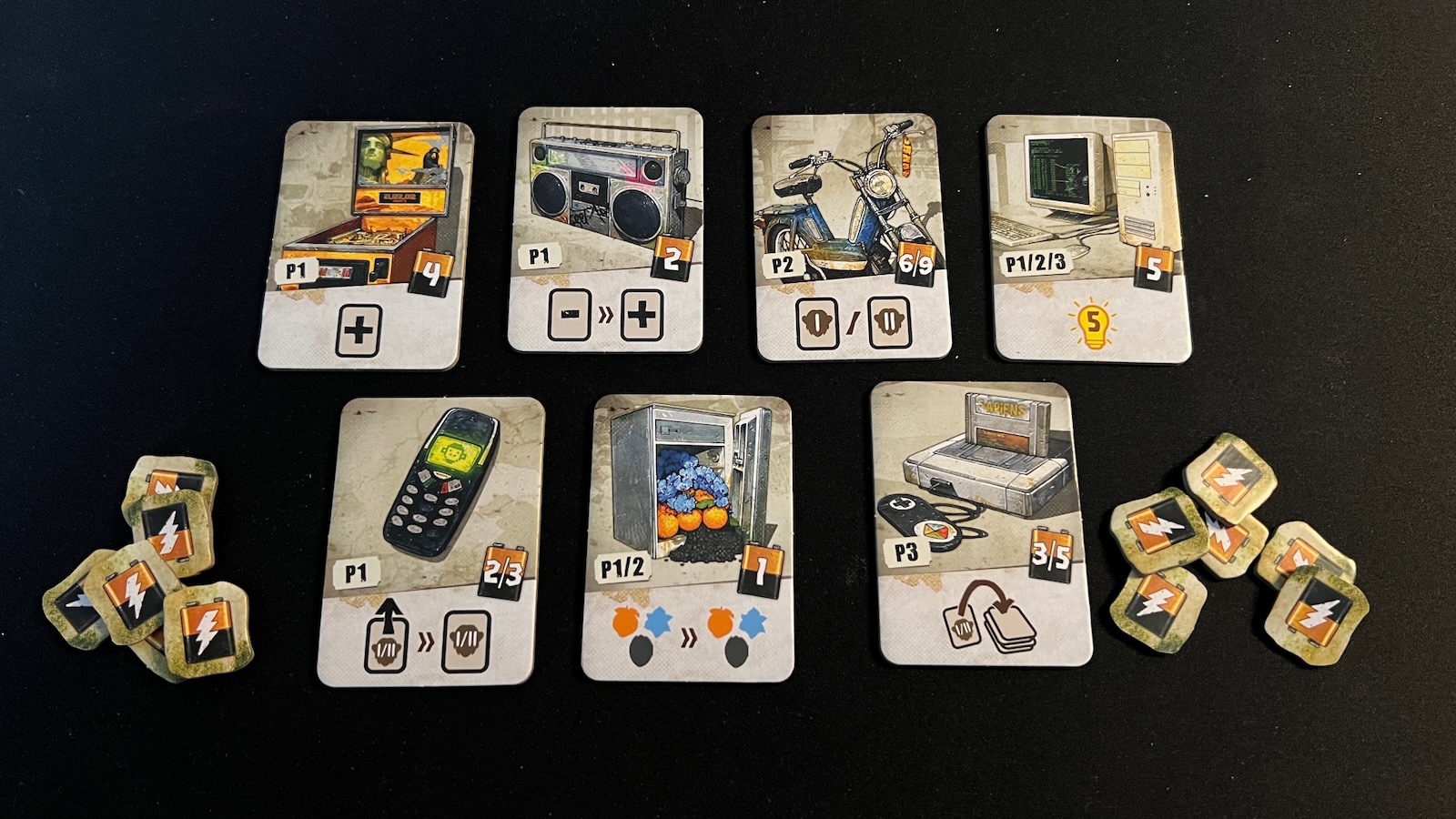
The human artifacts, alluded to earlier, give players special bonuses when activated. Each game features three artifacts that can be activated during different phases of a turn by discarding energy tokens. Artifacts can give players bonuses such as victory points, the ability to draw an extra card during phase one, and even the ability to hold over a card between turns. Players can activate one artifact once per turn.

Phase three is the cleanup phase. During this time, players discard their current tableau, collect their ape discs, and prepare for the next turn. The phases will continue until one player crosses the finish line. If multiple players cross the finish in the same phase then the one with the most points wins!
Production
The production of the game is probably its highlight. The artwork by Vincent Dutrait is vibrant, colorful, and inviting. The details in each of the different ape species is great and show the emotions of the special abilities in every frame. The color palette is also inviting, moving away from the typical primary colors for players to choose from into the more pastelles. The cards, resources, and cardboard tokens are also of a high quality.
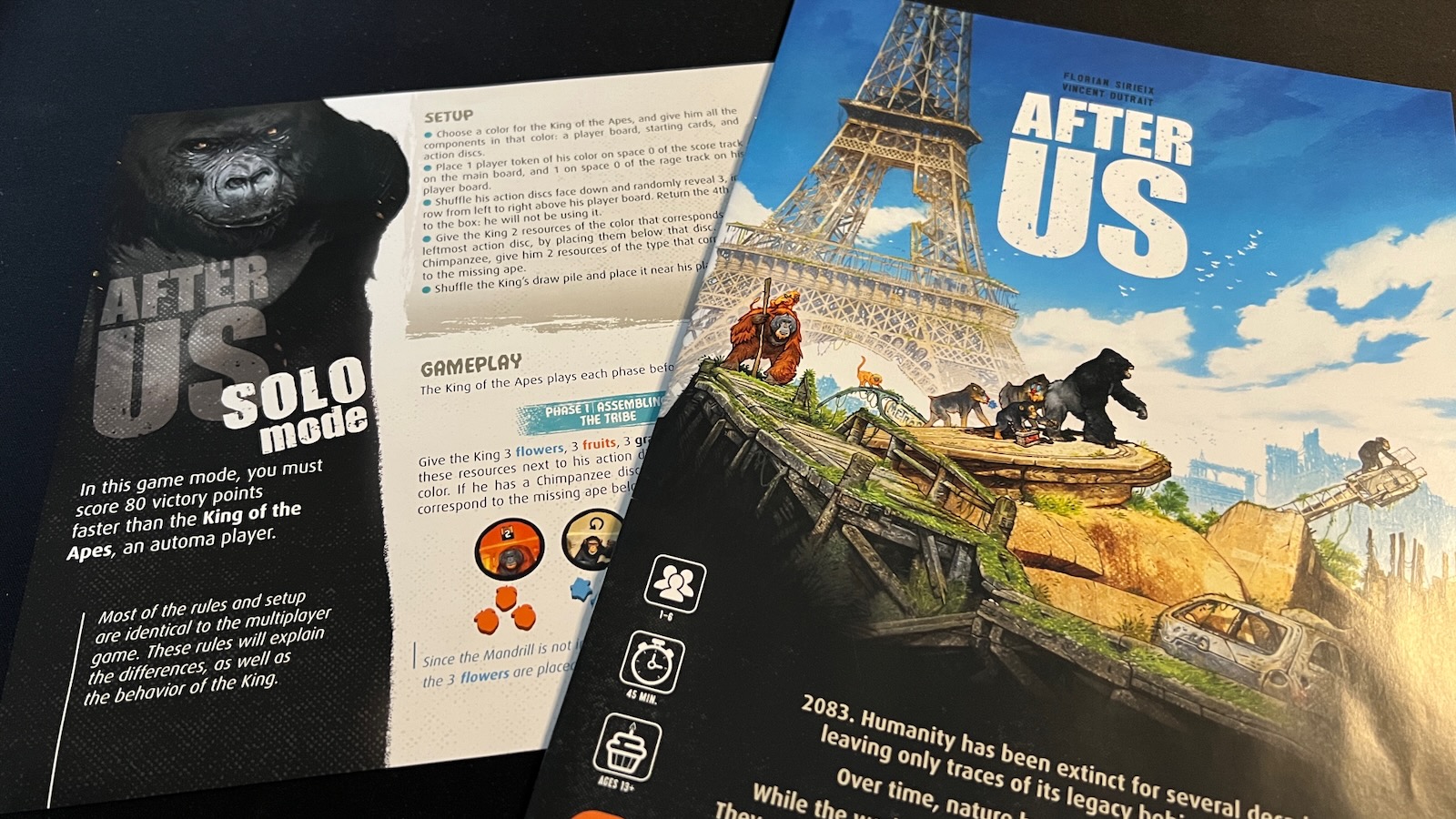
The rulebook is well laid out and easy to follow. The phases each get their own section and the specialty apes get their own sections detailing their abilities. The manual also includes examples of gameplay throughout, which always elevates a rulebook. The game also comes with a separate two sided sheet for the solo rules, which serves as a nice, separate reference during a solo game.
Gameplay
This is where the game fell flat for me. The game is basically multiplayer solitaire with the only interaction coming from utilizing your neighbor bonus or reaching for a card at the same time as another player. The frame mechanic is an intriguing new spin on the deckbuilding, but it felt a little lackluster in gaining resources and a few points. Another element that fell flat for me was in gaining new cards. In most deckbuilding experiences, you can see what you’re buying before adding something to the deck. In After Us, you utilize a blind draw. While you generally know the bonuses that will be featured somewhere on the card, you don’t know the make-up of the frames and how they could interact with the rest of the cards in your deck. It was also evident that going straight for level 2 cards, specifically the mandrill point cards, was the fastest way to win. In the numerous games we played, if someone went solely for the mandrill cards, they were the winner, which led me to question why the other cards were even there.
The included solo mode is actually a better game experience in that you play against a more balanced opponent. The King automa player will start with their own deck, three random discs, and a starting resource pool. Throughout their turn, they will collect resources, gain new cards, and utilize the computer artifact to race the player to 80 points. This balanced player offers up a more challenging experience than any of the multiplayer games we played.
Overall, this game was just not for me. The strategy seemed pretty one-sided and without any player interaction, it seemed like I was just waiting for someone to finish their turn so we could move on to the next phase and, in essence, just waiting for the game to end. The game was easy to pick up and understand and some of my family members had a great time playing. For me, it was lacking depth and could use some balancing mechanisms to make it a more solid game.
After Us
All Right
A post apocalyptic ape world filled with deckbuilding and innovative card interaction mechanics. Balance seems a little off with this one and not a lot of player interaction. The beautiful artwork does little to lift the very average experience.
Pros
- Gorgeous illustrations and color palette throughout the game
- Innovative card interaction mechanics
- Solo mode is more balanced
Cons
- Balance issues lead to a one sided strategy to win
- Very little player interaction
- Blind deck building leads to lack of depth in decision making
